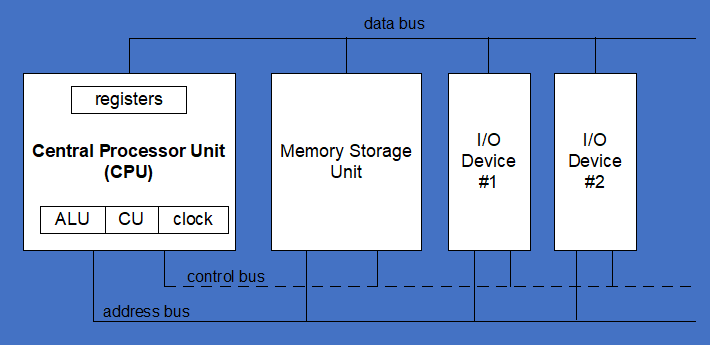X86 Processor Overview
Processor Components

Primary components of an x86 processor include:
- CPU: The central processing unit, responsible for executing instructions.
- Memory: Stores data and instructions for the CPU to access.
- I/O Devices: Input/output devices such as monitors, keyboards, and mice.
Processor Modes
In x86 architecture exists three primary modes of operation:
- Protected Mode:
- Protected mode is the native processor state for x86 devices.
- It’s the primary mode for most programming tasks on x86 devices.
- Allows multiple processes to run concurrently.
- Each process has its memory section and cannot directly access the memory of other processes.
- Prevents illegal operations that could lead to process failure or system instability.
- Real Address Mode:
- Implemented in early Intel programming environments.
- Facilitates direct hardware access, useful for low-level hardware interactions.
- Typically, programmers remain in protected mode unless direct hardware access is required, then switch to real address mode temporarily.
- System Management Mode:
- Provides an operating system environment for specific chip designs.
- Utilized for tasks like power management and security.
- Tailored for particular chip architectures, enabling chip-specific operating system functionalities.
Communication Channels
Communication between these components occurs through three primary buses:
- Control Bus: Synchronizes actions among attached devices, facilitating coordination.
- Address Bus: Holds the address of instructions and data during transfers.
- Data Bus: Transfers instructions and data between the CPU, memory, and I/O devices.